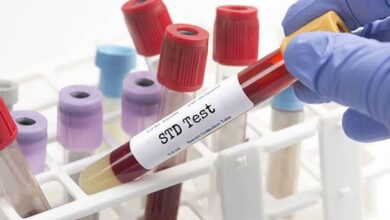
Understanding Sleep Apnea: Symptoms, Causes, and Diagnosis
Sleep apnea is a common sleep problem that affects millions of individuals globally. It affects normal breathing patterns during sleep, resulting in pauses or shallow breathing. These disruptions can happen several times at night, interrupting the sleep cycle and causing daytime weariness and other health problems.
Understanding the causes, symptoms, and diagnosis of sleep apnea Adelaide is crucial for effective management and improving overall quality of life.
In this article, we shall explore everything about sleep apnea, so continue reading to know more.
Table of Contents
Causes of Sleep Apnea
- Obstructive Sleep Apnea (OSA)
The most common type of sleep apnea, OSA, happens when the throat muscles relax excessively during sleep, resulting in an airway blockage or narrowing. This blockage causes pauses in breathing or shallow breathing, which disrupts regular sleep patterns.
- Central Sleep Apnea (CSA)
CSA, unlike OSA, results from a failure in the brain’s respiratory control center. The brain fails to provide adequate signals to the muscles that govern breathing, causing erratic breathing patterns when sleeping.
- Complex Sleep Apnea Syndrome
Also known as treatment-emergent central sleep apnea, it happens when an OSA patient develops central sleep apnea after beginning CPAP therapy. It combines obstructive and central sleep apnea.
Symptoms of Sleep Apnea
Loud Snoring
Loud and persistent snoring is often the hallmark of sleep apnea, Adelaide. It is caused by the vibration of the relaxed throat tissues during breathing.
Pauses in Breathing
Pauses in breathing during sleep, witnessed by a bed partner or family member, are a significant indicator of sleep apnea.
Daytime Fatigue
Despite spending enough time in bed, individuals with sleep apnea often experience excessive daytime sleepiness and fatigue, impacting their overall quality of life and productivity.
Morning Headaches
Waking up with a headache is a common symptom of sleep apnea, caused by changes in carbon dioxide levels and oxygen saturation during sleep.
Diagnosis of Sleep Apnea
Diagnosing sleep apnea involves a combination of medical history, physical examination, and sleep studies. Here are some common diagnostic methods:
- Sleep Study (Polysomnography)
Polysomnography is considered the gold standard for diagnosing sleep apnea. A sleep study involves monitoring parameters such as brain waves, oxygen levels, heart rate, and breathing patterns during sleep. It can be conducted in a sleep clinic or home using portable monitoring devices.
- Physical Examination
Your healthcare provider may perform a physical examination to assess your mouth, nose, and throat for any physical abnormalities that could contribute to sleep apnea.
- Medical History
Discussing your symptoms, medical history, lifestyle factors, and family history of sleep disorders can provide valuable information for diagnosing sleep apnea.
- Home Sleep Apnea Testing (HSAT)
Sometimes, doctors may recommend a simplified version of a sleep study known as home sleep apnea testing (HSAT). HSAT Respirico involves wearing a portable monitoring device at home to assess breathing patterns and oxygen levels during sleep.
Wrapping Up
Understanding sleep apnea’s causes, symptoms, and diagnosis is the first step toward effective management and treatment. If left untreated, sleep apnea can lead to serious health complications, including high blood pressure, heart disease, stroke, and diabetes. Seeking timely medical evaluation and treatment is essential for improving sleep quality, overall health, and quality of life.








